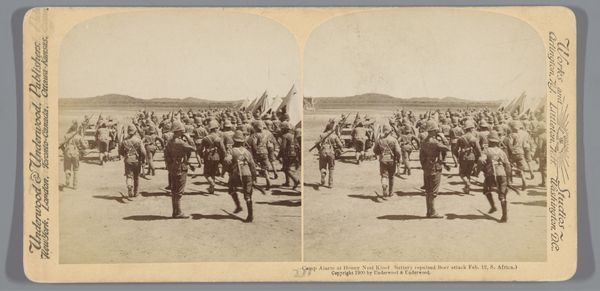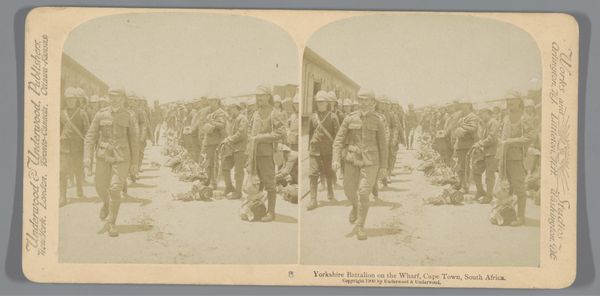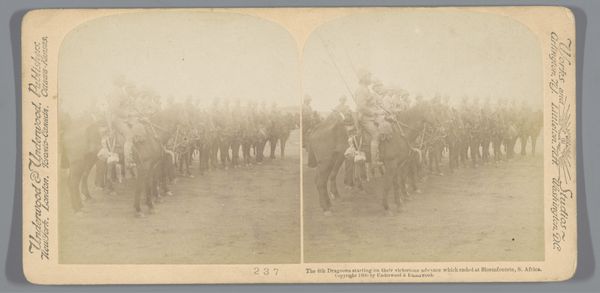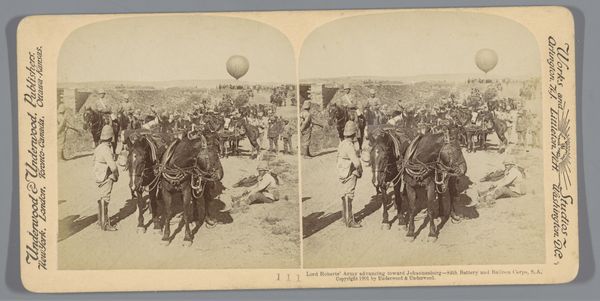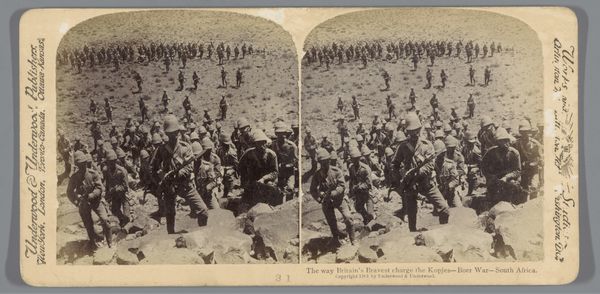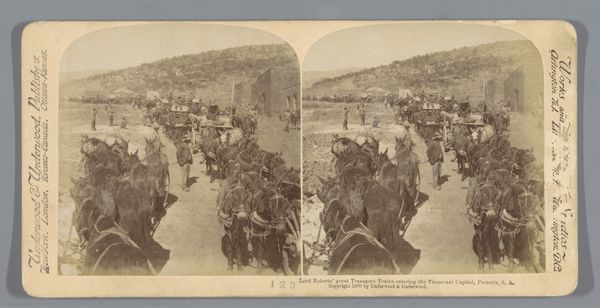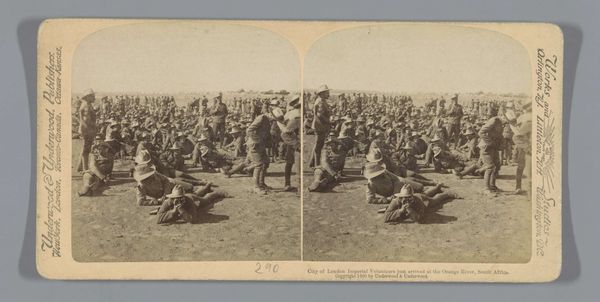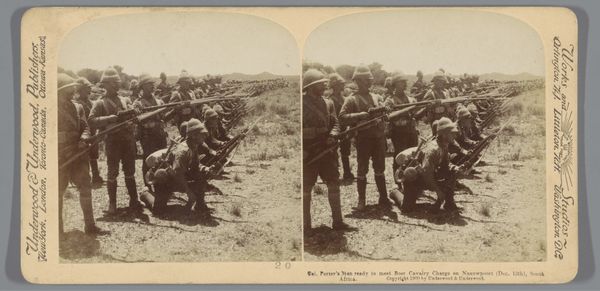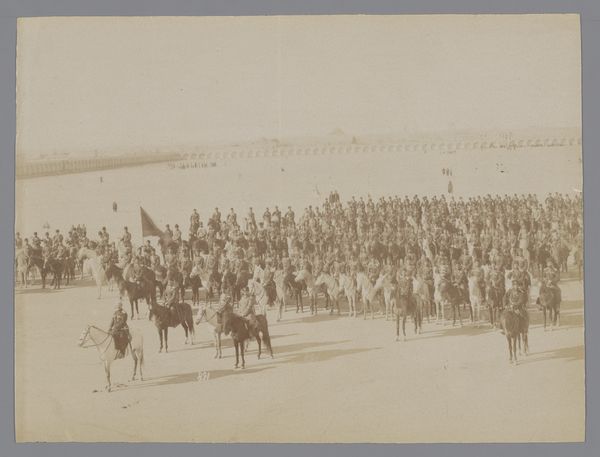
print, photography, gelatin-silver-print
#
portrait
#
african-art
# print
#
landscape
#
photography
#
coloured pencil
#
gelatin-silver-print
#
realism
Dimensions: height 88 mm, width 178 mm
Copyright: Rijks Museum: Open Domain
Curator: Here we have an intriguing gelatin-silver print, an anonymous work entitled “Gezicht op militair kamp met tenten en soldaten in Bloemfontein, Zuid-Afrika,” dating from 1901. Editor: It’s a remarkably desolate scene. That relentless row of tents fades into the background, dwarfed by what looks like a single barren mountain in the distance. Gives a feeling of utter…isolation. Curator: Indeed. This photograph offers a glimpse into a very specific, politically charged moment: the Second Boer War. We're seeing, essentially, a staging ground for conflict. Editor: And consider the conditions suggested by the image itself! Look at that expanse of dry land they’re encamped on; the rough, likely hastily constructed tents, it speaks to the harsh realities of colonial military life. The print material itself--gelatin silver--mass producible, lending itself to distribution and documentation. Curator: Precisely. The distribution of images like this one played a significant role in shaping public opinion about the war. They functioned as propaganda, or at the very least, selective documentation, sanitizing the grim reality. These men, lining up stiffly in ranks, they embody colonial power. Editor: I think it’s more nuanced. Look at their postures, Curator. Shoulders slumped. Many turned slightly away. The material reality here isn’t just power but weariness, boredom, the mundane grind of occupying forces. Curator: An insightful observation, how it exposes the vulnerability within the seemingly strong imperial structure. Even the method of printing, the gelatin-silver, speaks to a society increasingly reliant on mechanical reproduction to spread its messages and control information. Editor: Exactly. By analyzing how these prints were produced, consumed, we uncover a much broader conversation around labor, technology, and ultimately, the human cost of conflict. The sheer volume of prints like this suggests how ingrained this type of colonial narrative was into popular consumption. Curator: Seeing it this way shifts our understanding from a singular image to an instrument deeply entrenched in socio-political complexities. Editor: Absolutely. This print challenges us to see beyond the immediate surface, recognizing it's a tangible piece of history molded by the technologies, material circumstances and powers of its time.
Comments
No comments
Be the first to comment and join the conversation on the ultimate creative platform.
